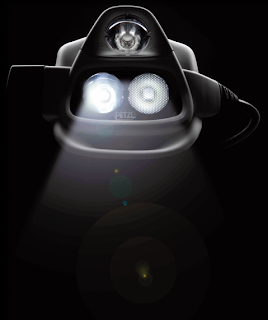 |
| The Everest Conga Line |
The issue of ethics on Everest is raised every year, usually round about the time the annual deaths occur in the Everest climbing season (blunt way of putting it, but true none the less). For me my interest in the subject came a number of years ago while watching “Everest Beyond the Limit”; a series on the Discovery channel following a number of climbers attempting to summit Everest in 2006. The series became famous for the footage of climbers on the expedition finding a dying climber (who would later be named as David Sharp). David Sharp had attempted to climb Everest unsupported and unguided using a minimalist package from Asian Trekking. He was discovered barely conscious at Green Boots cave; a small shelter containing the body of Tsewang Paljor; an Indian Climber who died on Everest in 1996. It is estimated that before David died he was passed by more than 40 climbers who did not render any assistance to the dying man. The first man to encounter David was Mark Inglis - a double amputee from New Zealand. Inglis stated in an interview when he found David on his ascent, he thought he was already dead, and had continued on. Another climber from the same group (Max Chaya) encountered David on his descent from the summit and attempted to give assistance, along with a Sherpa from the group, but to no avail – David was unable to walk even with assistance and an hour of trying. David died on 15th May 2006. Much of the criticism was (unfairly in my opinion) levelled at Russel Bryce – the expedition leader of the Chaya and Inglis expedition group, because it was felt he did not offer enough assistance to David.
1 week later an Austrailia climber; Lincoln Hall was left for dead on Everest after he fell ill with altitude sickness. His sherpa’s had attempted for hours to get him moving but eventually he was left for dead. It was widely reported in the media that he had died. The next day a team lead by US climber Dan Mazur
encountered Lincoln:
 |
| Lincoln Hall |
“Sitting to our left, about two feet from a 10,000 foot drop, was a man. Not dead, not sleeping, but sitting cross legged, in the process of changing his shirt. He had his down suit unzipped to the waist, his arms out of the sleeves, was wearing no hat, no gloves, no sunglasses, had no oxygen mask, regulator, ice axe, oxygen, no sleeping bag, no mattress, no food nor water bottle. 'I imagine you're surprised to see me here', he said. Now, this was a moment of total disbelief to us all. Here was a gentleman, apparently lucid, who had spent the night without oxygen at 8600m, without proper equipment and barely clothed. And ALIVE”
A rescue on a massive scale swung into action with a team of 12 Sherpa’s plus Dan Mazur and his team (who had abandoned their summit bid) worked to get Lincoln down from Everest. He survived.
After seeing Everest Beyond the Limits and seeing the genuine emotion from expedition members who encountered David Sharp, there was no lack of desire to help him, but 2 people can’t drag a dying man down a mountain in the death zone, but 40 people might have been able to. Anyone wanting to read more about the controversy regarding the 2006 Everest deaths, should consider reading “Dark Summit” by Nick Heil, it gives a balanced and detailed account of what happened and why.
 |
| Ms Shuttleworth |
"There were casualties from the day before, which was tragic and horrendous.
“There were quite a few bodies attached to the fixed lines and we had to walk round them.
"There were a couple who were still alive.”
[http://www.bbc.co.uk/news/uk-england-beds-bucks-herts-18199899]
I had to read this several times for it to sink in; “We had to walk round them”, “Couple who were still alive”. She makes reference that one Sherpa helped one of them but they were “to far gone”. To reference back to the Lincoln Hall incident, is it the case that “too far gone” has become something which people judge differently on Everest, do they want to believe they are “too far gone” to alleviate their own guilt at walking past/around/over them, or are they genuinely too far gone. Lincoln hall was placed in this bracket yet he lived, how many others are judged to be "too far gone" where they could in fact be saved. Easy for me to judge sat in my living room on a warm summers day, but I know myself, I know that were I ever in that situation I would never allow myself to carry on to the summit while there were living people dying behind me. Perhaps there is often nothing that can be done for these people, but I couldn’t live with myself if I didn’t try, and I find it worrying how many Everest tourists these days (people with no mountaineering background or skills) devalue human life in exchange for the bragging rights of climbing Everest. 40 people passed David Sharp, if 20 people had stopped, maybe he would have been saved, maybe he wouldn’t. These people Leanna talks about walking around, maybe they were dead already, or maybe if she (and others) had helped then they wouldn’t be. Leanna will get a hard time from the climbing community unless she comes forward to justify herself (difficult to try and do I suppose), UKClimbing.com (lead by Simon….) have already started a frank discussion on the matter: http://www.ukclimbing.com/forums/t.php?t=507050&v=1#x6887864, she perhaps doesn’t deserve the stick she is going to get, she is just another ambitious teenager who didn't realise what she was putting her foot in, but should maybe have considered the implications of bringing up such a sensitive issue in this manner whilst in the public eye, many would consider her use of "people dying on the ropes" just a way to emphasise her achievement; I'm not one of them. It should also be stressed at this point that my anger is not directed solely at Leanna, she is simply a public face of the otherwise faceless horde of walkers who seem to disregard human life in favor of achieving their own goals.
 |
| Nadav Ben-Yehuda (left) and Aydin Irmak |
I want to leave on one short phrase which for me summed up the difference between people who walk past dying humans on Everest, and those who stop to help;
Nadav Ben-Yehuda described his decision to stop and help Aydin Irmak as “Automatic”, how many less people would die on Everest if more people described their decisions as such.





























